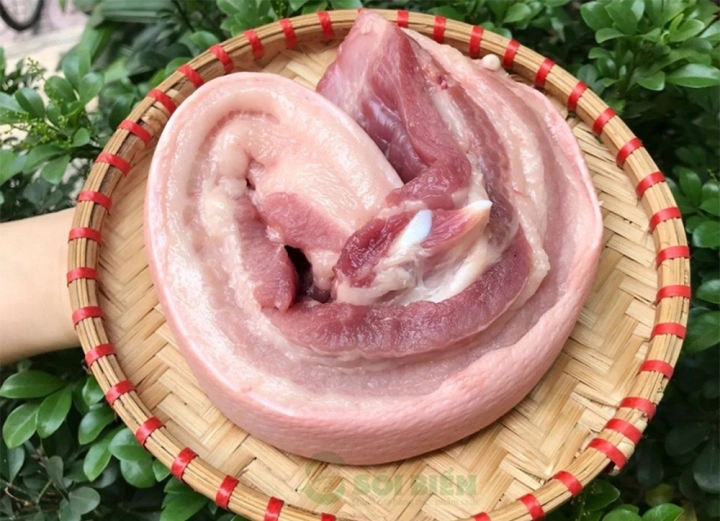While they are both pork, “homegrown” pork – raised in a traditional way with natural feed, without growth stimulants or harmful additives – is preferred by consumers because it has a rich flavor, emits an attractive aroma when cooked, and is particularly safe for health. Free-range pigs are highly regarded because they are firm, low in excess fat, and not dry. It is considered clean pork.
On the other hand, industrially raised pork often uses processed feed with growth stimulants to achieve large weight gain and quick release from the farm, resulting in bland, watery meat with no pleasing odor and, especially, harmful residues that can adversely affect the health of consumers in the long run. These industrially raised pigs are also more prone to disease, so they often have antibiotic residues.
Therefore, even though industrially raised pork is much cheaper, smart consumers still choose to buy clean pork, which is raised in a traditional way and is commonly referred to as “homegrown” pork. So how do you differentiate between clean pork and weight gain pork?
Differentiating between clean pork and weight gain pork
Clean pork is usually raised for at least 10 months before it reaches the size for release from the farm, and it has a low production volume. Therefore, livestock farms usually focus on industrial pigs, so the amount of traditionally raised pork on the market is not large, only meeting the demand of a small portion of the population. In response to the preference for clean pork, even though it comes with a higher cost for consumers, many online sellers advertise their pigs as “homegrown” but sell pigs that have undergone weight gain.
The following tips will help you differentiate between clean pork and weight gain pork.
Observe the skin and fat: In general, the skin of “homegrown” pork will be whiter and shinier than industrially raised pork. Traditionally raised pork usually has a 2-3cm thick layer of fat, with little lean meat. The layer of fat and the lean meat are tightly connected, and the skin is thick. Industrially raised pork has very little fat and thin skin.
Sense the stickiness: When pressing your finger into a piece of meat, you will feel that traditionally raised pork is stickier, with firmer meat. On the other hand, weight gain pork tends to have lower stickiness, with softer, looser meat.

Tips for differentiating clean pork and weight gain pork: Clean pork has a higher stickiness when touched. (Image: Sói Biển)
To recognize these differences, consumers need to have a keen sense and this ability will increase with experience. The more you go shopping, the better you will become at differentiating clean pork from weight gain pork. After purchasing, you can also identify if you have made a mistake during the cooking process because weight gain pork will release a lot of water when grilled or stir-fried, the meat will be loose, and the aroma will not be distinct. In contrast, clean pork will release very little water, have a tantalizing aroma when cooked, and the meat will be firm and flavorful.
Identifying diseased pork
Pork with diseases is very dangerous to health, even to the lives of consumers, but many unscrupulous sellers still try to sell them. Below are the signs for identifying them:
– Pigs infected with trichinosis: With the naked eye, you can see signs such as white spots in the shape of oval or pea-sized grains of rice.
– Pigs with swine fever: There are spots with bleeding or bruises, the meat is soft, and the ears turn purple.
– Pigs with erysipelas: There are bleeding spots under the skin or on the rim of the pig’s ears, similar to mosquito bites.
– Pigs with septicemia: The piece of pork is collected together with blood or there are bruises.
According to vtc.vn





































